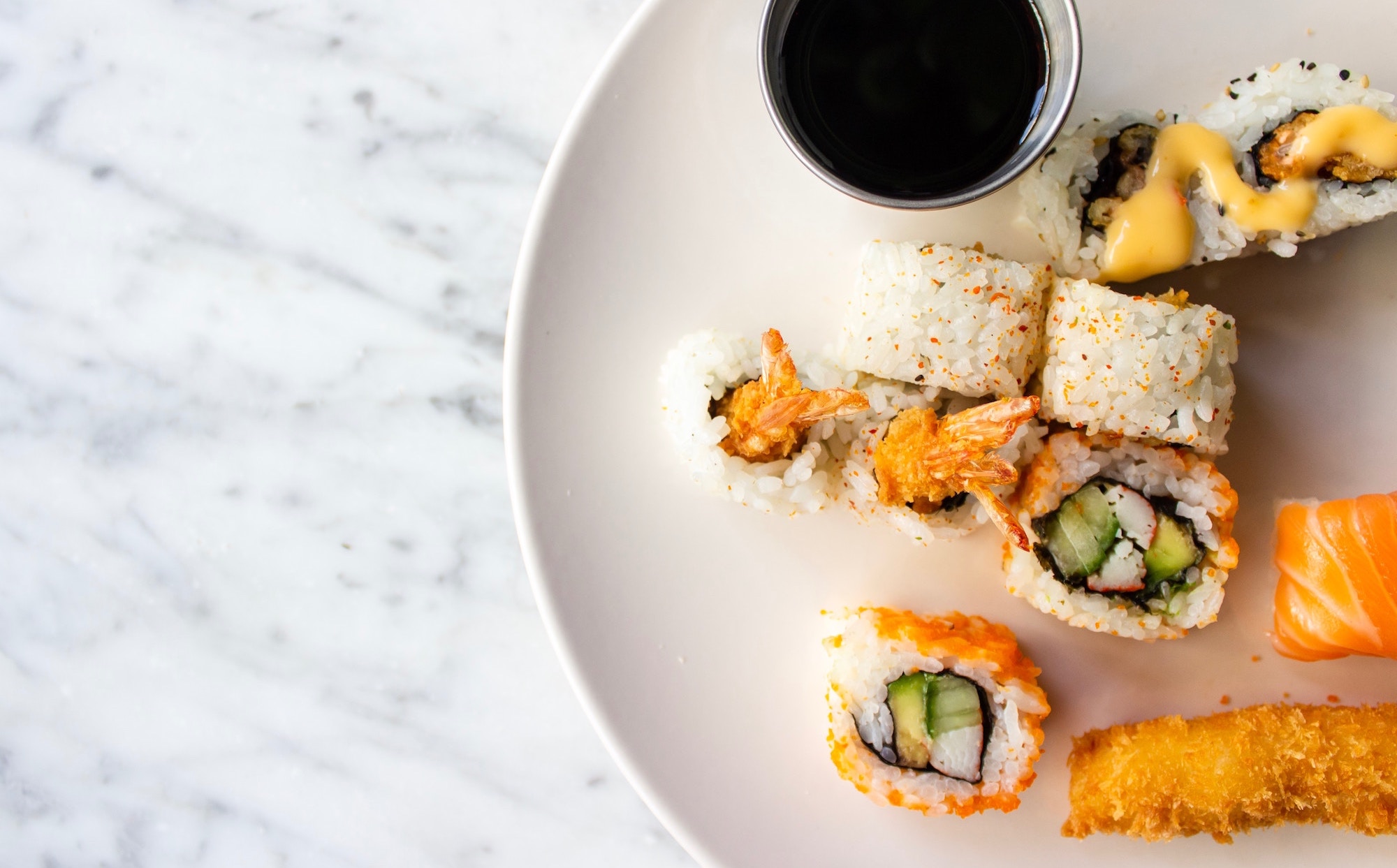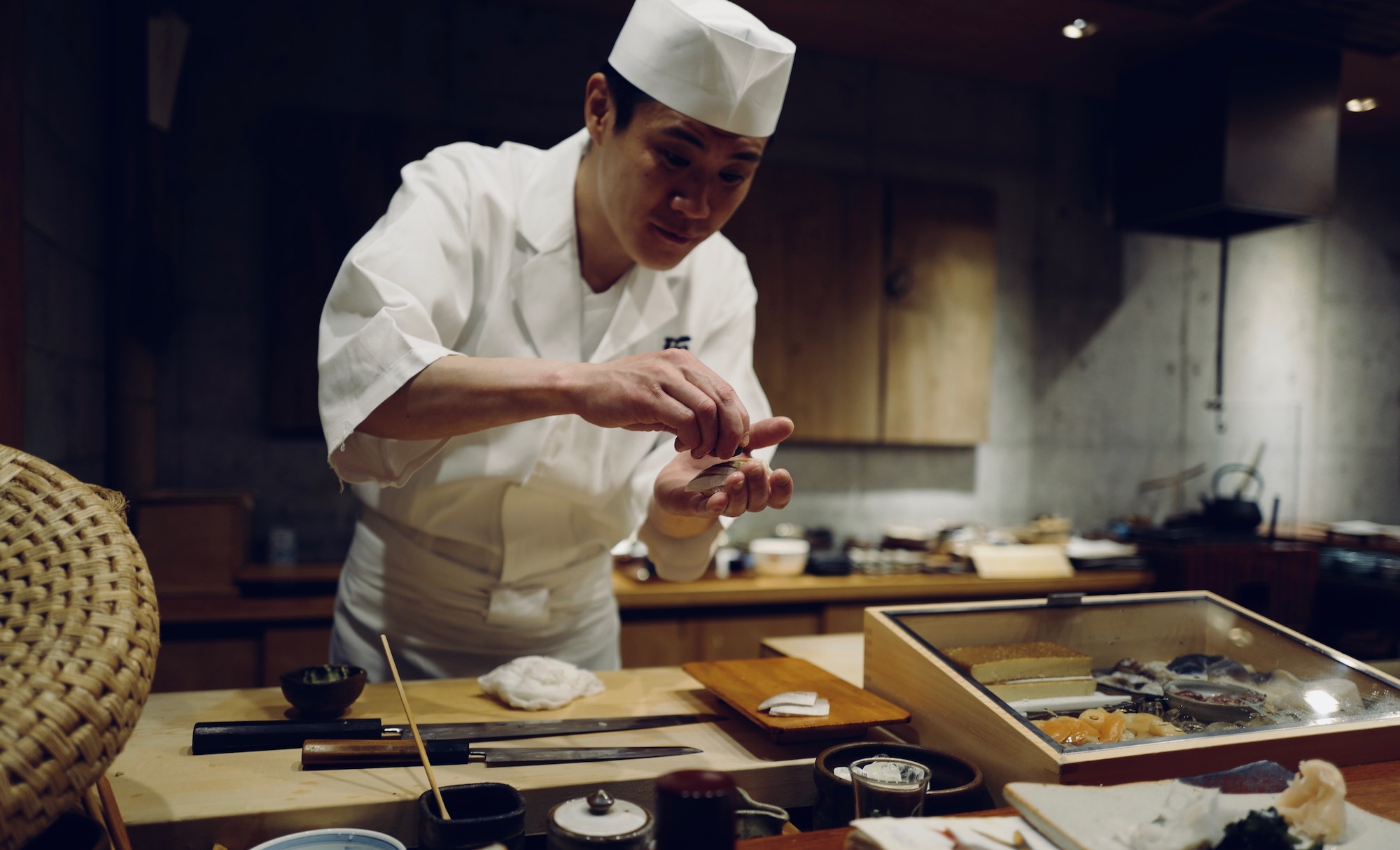A Beginner’s Guide To Eating Sushi – All of us have those friends who are crazy about sushi and they will just go on about how good it tastes, the exotic flavors, options, etc. Whether that blabbering or something else convinced you to give sushi a try, we are happy that you are reading this beginner’s guide.
Similar to trying anything for the first time, make sure you start with the safest options and know a few rules of the game for an enjoyable experience. In this guide, we will tell you what to order (for beginners), how to balance the flavors and a few bonus tips. So, let’s get rolling!
Start With Cooked Sushi Options
 If you haven’t eaten raw fish before, we would strongly suggest that you begin your sushi journey with cooked options. Take one step at a time to get to know sushi and appreciate the perfect blend of rice, vinegar, nori, and cooked seafood, before you get more adventurous and try the raw options.
If you haven’t eaten raw fish before, we would strongly suggest that you begin your sushi journey with cooked options. Take one step at a time to get to know sushi and appreciate the perfect blend of rice, vinegar, nori, and cooked seafood, before you get more adventurous and try the raw options.
Many people live under the misconception that sushi means raw fish, which is not true. This Japanese delicacy also includes a variety of vegetables, cooked seafood, and meat. Some cooked sushi options include smoked salmon sushi, spicy chicken sushi roll, prawn tempura roll, eel avocado sushi, and so on.
Know What To Order First
When you get the menu in your hand, don’t jump into ordering whatever catches your fancy. It’s always better to start with lighter options to get into the sushi mode and then move on to the heavier fish or seafood. We would suggest that you start with a cucumber or avocado maki roll.
Next move to cooked fish options with less fishy intensity. Milder fish for beginners include red snapper (tai), scallop (hotategai), halibut (ohyo), and squid (ika). Tuna appears to have a strong flavor due to its dark color, but it is also a mild fish, except the fatty tuna that contains a rich buttery texture.
Keep options like mackerel (saba), octopus (taco), and eel for your next visit to the restaurant. You will feel more confident and bolder to try new options. Even if you don’t like them, you will at least know some types of sushi that you liked on your previous visit.
Balance The Flavors Correctly
Well, we think the sub-heading should better sound as what not to do to ensure that the balance of flavors so carefully prepared by the sushi chef or itamae does not get distorted. The chef already adds some amount of wasabi and soy sauce in the sushi to strike a balance without letting any ingredient overpower the others.
However, when you are served sushi in a plate, it will typically comprise of a small bowl containing soy sauce and a dollop of wasabi at the side of the plate. Don’t be tempted to slather your sushi with extra helping of wasabi or sauce without taking a bite.
If you do need some extra heat, take a small amount of wasabi (warning: it’s too hot) and put it over the fish or roll. For soy sauce, use a pair of chopsticks or your hands to pick the sushi piece and then dip it slowly in the sauce (fish part first) and then try to eat it on one go.
 If the sushi size is too big to eat at a time, you may eat in 2 bites but make sure you don’t take too many bites or else the sushi will fall apart and you will not be able to enjoy the ingredients together. Sushi is all about that perfect play of flavors that leave a wonderful taste in the mouth.
If the sushi size is too big to eat at a time, you may eat in 2 bites but make sure you don’t take too many bites or else the sushi will fall apart and you will not be able to enjoy the ingredients together. Sushi is all about that perfect play of flavors that leave a wonderful taste in the mouth.
Few Tips For An Enjoyable Experience
As a beginner, it is natural to feel a bit confused and nervous in a sushi restaurant. We recommend that you ask a friend who has been to a sushiya before to accompany you for the first time. If not, here are a few tips to ensure that you have an enjoyable experience.
 When you enter a sushi restaurant, the chef or server will greet you in Japanese by saying ‘Irasshaimase’ which means ‘Welcome to the store!‘ or ‘Come on in’. It’s their way of welcoming the guests. Reply by saying ‘Ojama shimasu’ or simply give a warm smile in return and say ‘Thank you’.
When you enter a sushi restaurant, the chef or server will greet you in Japanese by saying ‘Irasshaimase’ which means ‘Welcome to the store!‘ or ‘Come on in’. It’s their way of welcoming the guests. Reply by saying ‘Ojama shimasu’ or simply give a warm smile in return and say ‘Thank you’.
Take a seat at the table when you are new because you may not be comfortable ordering or eating like an old customer. When you know what you like and are confident about what to order, you may start sitting at the bar for a more intimate experience.
Ask the chef or server to help you with your first order. Tell them you are a beginner and if you have any reservations such as no raw fish or only veg sushi, etc. They will be happy to help you enjoy your experience to the fullest.
After you are done with eating a sushi piece, take a small bite of the pickled ginger (the pink stuff) you see at the side of the plate. The purpose of gari or pickled ginger made from younger ginger roots is to cleanse your palate so that you are able to enjoy the delicate flavors of the next dish served to you.
Let us know on our Facebook group your best tip when it comes to sushi! Don’t miss out more great news about Japan, follow us on Facebook, Instagram, Twitter, and Pinterest.

James
James is a sushi enthusiast and owner of sushi blog names easyhomemadesushi.com. He has been to Japan several times and loves Japanese food and culture. He is also a passionate writer and likes to share his experiences and knowledge through his blog.







